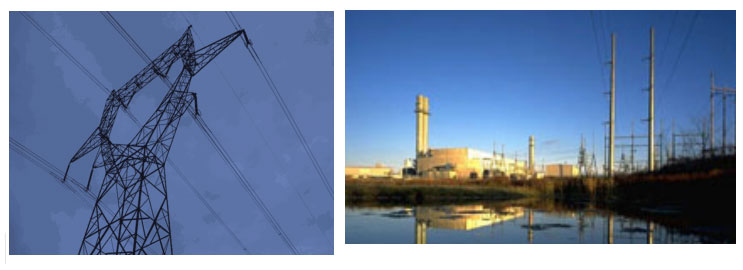Greenhouse Gas Emission
- Home
- Greenhouse Gas Emission
Carbon Foot Print
GHG Assessment & Carbon Neutrality, Carbon Footprint – 3 Scopes

Scope 1 – Direct emissions released from sources that are owned or controlled by the business entity
Scope 2 – Indirect emissions associated from the generation of imported energy (Electricity, Heat or Steam)
Scope 3 – All other indirect emissions that are not released from sources mentioned under Scope 2 and includes emissions which are outside an organization's own operations.
Scope 1- Direct Emissions :
Relatively easy:
Stationary Combustion: from the combustion of fossil fuels
• Heat generation
• Power Generation
Mobile Combustion: operation of vehicles or other forms of mobile transportation from company owned vehicles
Process Emissions: emissions released during the manufacturing process in industry sectors
Fugitive Emissions: unintentional release of GHG from sources including
• Refrigerant systems
• Natural gas distribution
• CFC, HFC losses from refrigerant systems
• Fire Extinguishers
• Sulfur hexafluoride losses from electrical equipment

Scope 2: Indirect Emissions – Purchased Energy :-
Relatively easy:
Emissions from consumption of purchased utilities:
• Typically, electricity
• Could be steam or high temperature hot water to meeting heating requirements
• Purchase of Cooling Air

Scope 3: Other Indirect Emissions :-
Can be very difficult:
Scope 3: Other indirect GHG emissions
Scope 3 emissions are a consequence of the activities of the company but occur from sources not owned or controlled by the company.
• Extraction and production of purchased materials and fuels, • Transport-related activities in vehicles not owned or controlled by the company, • Outsourced activities, • Waste disposal • Employee travel for office as well as business travel • Stay - Outstation • Raw material consumption (eg. Paper) etc. • Outsourced work

Benefits of being Carbon Neutral :-
• Effective Communication tool to demonstrate organizational commitment to environment as part of its corporate social responsibility
• Exhibit leadership by communicating your Environmental initiatives to Stakeholders
• Monetary Savings: Optimising emissions would ultimately lead to cost savings
• Customer Recognition: A sustainable brand is easily differentiated from less responsible brands
• Identify the most effective way of reducing emissions:
1. By changes in your own operations or
2. Changes including your suppliers or
3. How your customers use and dispose of your product
• Gauge the impact that your product/ business has on global warming leading to peer to peer comparison levels
• Become more attractive to new or potential client as they see your involvement and positive impact towards environment demonstrating good leadership traits.
• Meet your sustainability goals and be prepared for the inevitable new economy where GHG emissions are measured, regulated and taxed/capped.
Carbon Offsets :-
• A carbon offset is a reduction in emissions of carbon dioxide or greenhouse gases made in order to compensate for or to offset an emission made elsewhere
• Voluntary / Optional
• Sources of Emission Reductions
1. CDM Projects (CERs)
2. Voluntary Carbon Standard (VCS) projects (VERs)
3. Gold Standard projects (GS Credits)
4. Renewable Energy Certificates (Domestic/International)
5. In-house project development
